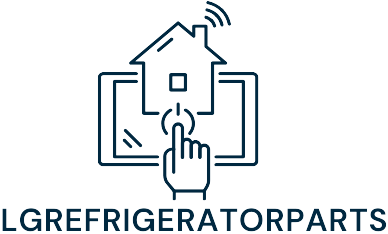Table of Contents
ToggleIn a world where technology changes faster than you can say “interest rate,” the mortgage finance landscape is experiencing a revolution. Gone are the days of tedious paperwork and long waits for approvals. Today’s innovations are transforming how people buy homes, making the process smoother and more accessible.
Overview of Mortgage Finance Innovations
Innovations in mortgage finance reshape the industry by leveraging technology. Digital platforms facilitate quicker application processes, allowing borrowers to compare rates swiftly. Automated underwriting systems assess applications in real time, reducing approval times significantly.
Blockchain technology enhances transparency and security in transactions. This innovation minimizes fraud risks and ensures accurate record-keeping. Smart contracts automate various processes, further streamlining the mortgage experience.
Additionally, artificial intelligence (AI) offers personalized financial advice, tailoring options to individual borrower needs. Algorithms analyze vast datasets to provide insights, making home financing decisions more informed. Mobile applications enable borrowers to manage their mortgages conveniently, track payments, and receive updates on market conditions.
Virtual reality (VR) introduces immersive home tours, allowing prospective buyers to explore properties from anywhere. This innovation saves time by narrowing down choices before in-person visits.
Crowdfunding platforms provide alternative financing avenues for homebuyers, democratizing access to capital. These platforms connect multiple investors with borrowers seeking funds, fostering community-driven housing opportunities.
Robo-advisors simplify the mortgage selection process by guiding users through various options. Their algorithms enhance decision-making by comparing multiple products based on user preferences.
Regulatory changes accompany these innovations, adapting to protect consumers and encourage competition. New rules often promote transparency in lending practices, enhancing borrower trust. Overall, the mortgage finance landscape continues evolving, embracing technology to improve accessibility and efficiency.
Key Innovations in Mortgage Financing

The mortgage finance industry undergoes significant transformation due to innovative technologies. These improvements streamline processes and enhance accessibility for consumers.
Digital Mortgage Applications
Digital applications revolutionize how borrowers submit their mortgage requests. Users can complete applications online, reducing the time spent on paperwork. With features that allow for real-time documentation uploads, financial institutions receive necessary information instantly. This speed facilitates faster approvals compared to traditional methods. Furthermore, borrowers can compare rates from various lenders side by side, ensuring they secure the most favorable terms.
Blockchain Technology
Blockchain technology plays a critical role in enhancing security and transparency in mortgage transactions. This decentralized system records all transactions on an immutable ledger, minimizing the likelihood of fraud. It allows multiple parties to access the same information, simplifying communication during the closing process. Additionally, blockchain can automate transfers of ownership through smart contracts. This automation not only expedites closing times but also reduces closing costs significantly.
AI and Machine Learning
AI and machine learning tools personalize the mortgage experience for borrowers. These systems analyze individual financial profiles to provide tailored recommendations for mortgage options. They enhance underwriting processes by evaluating risk factors more accurately than human assessors. Furthermore, chatbots assist potential homeowners by answering questions quickly and efficiently. By integrating these technologies, lenders improve customer service while making informed lending decisions.
Benefits of Mortgage Finance Innovations
Innovations in mortgage finance provide various advantages, enhancing the overall process for borrowers and lenders alike.
Increased Efficiency
Mortgage finance innovations improve efficiency by eliminating traditional barriers in the application process. Digital platforms allow for rapid submissions, while automated systems assess applications almost instantly. Approval times drop significantly, often reducing waiting periods from weeks to just days. Analytics tools evaluate borrower data swiftly, minimizing human error and expediting decision-making. Resources like online verification of documents enable faster processing, encouraging quicker closings. As a result, borrowers experience a streamlined journey when obtaining financing for their homes.
Enhanced Customer Experience
Customer experience sees a noticeable boost through mortgage finance innovations. Personalized advice from AI-driven tools assists borrowers in making informed choices about their mortgage options. Chatbots provide immediate support, addressing inquiries around the clock and enhancing satisfaction. Mobile applications empower users to manage their loans seamlessly, giving them control over their finances. Immersive VR tours allow potential buyers to explore properties without the need for physical travel, saving time and effort. Overall, these advancements create a more user-friendly experience that meets the evolving demands of today’s consumers.
Challenges and Limitations
Innovations in mortgage finance bring several challenges that impact their effectiveness and adoption. Understanding these hurdles is key for stakeholders in the industry.
Regulatory Concerns
Regulatory frameworks struggle to keep pace with rapid technological advancements. Compliance with existing laws can become complex, especially when new practices emerge. Traditional regulations often do not account for innovations like blockchain or AI-driven tools. Misalignment with standards may lead to delayed implementations or unforeseen liabilities. Adapting regulations is essential for promoting a secure lending environment while fostering innovation. Stakeholders must prioritize collaboration with regulators to ensure that updates reflect the dynamic nature of the mortgage industry.
Technological Barriers
Technological adoption varies across different market segments. Some lenders may lack the infrastructure or resources needed to implement advanced systems. Resistance to change within organizations can hinder progress, as employees adapt to new technologies. Additionally, cybersecurity concerns present significant challenges due to increased reliance on digital platforms. Protecting sensitive borrower information is crucial for maintaining trust. Limited access to technology in certain regions can create disparities, leaving some borrowers without options. By addressing these barriers, the industry can enhance the benefits of mortgage finance innovations for all participants.
Future Trends in Mortgage Financing
Innovations in mortgage financing continue to evolve, with several key areas gaining traction.
Sustainability Initiatives
Sustainability initiatives are at the forefront of future trends. Lenders increasingly focus on eco-friendly mortgage products, promoting energy-efficient homes. Green financing options often offer lower interest rates or incentives for energy-efficient upgrades. Borrowers benefit from reduced utility costs and long-term savings. Many lenders are developing criteria for assessing a property’s sustainability, linking it directly to mortgage terms. Industry leaders advocate for aligning these products with stricter environmental standards. As consumers become more environmentally conscious, demand for sustainable financing grows. This trend not only addresses climate change but also appeals to a demographic seeking responsible investment opportunities.
Fintech Collaborations
Fintech collaborations are reshaping how mortgage financing operates. Technology firms partner with traditional lenders to enhance service delivery and streamline processes. Such collaborations create innovative applications that simplify loan applications and accelerate approval timelines. Enhanced data analytics enable a more precise risk assessment, improving decision-making for lenders. Many startups introduce user-friendly interfaces that attract new borrowers and facilitate low-cost solutions. These partnerships also foster competition, driving existing lenders to adopt best practices in customer service. As a result, consumers enjoy increased transparency and accessibility in their mortgage experiences. The combination of fintech expertise and traditional banking creates a more robust financing landscape.
The mortgage finance industry is undergoing a transformative shift driven by technology. Innovations are not only streamlining processes but also enhancing the overall experience for borrowers and lenders alike. By embracing digital platforms and advanced technologies like blockchain and AI, the industry is making strides toward greater efficiency and transparency.
As sustainability initiatives gain traction and fintech collaborations emerge, the future looks promising. These developments will likely lead to more accessible and user-friendly mortgage solutions that cater to a broader audience. While challenges remain, the continued evolution of mortgage finance innovations holds the potential to reshape home financing for years to come.



